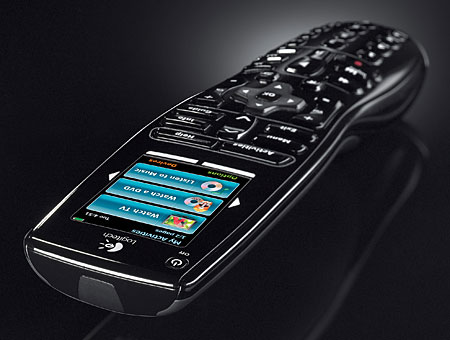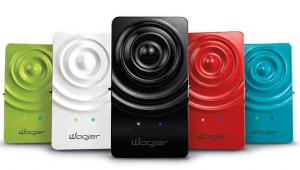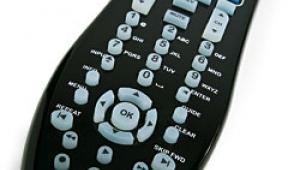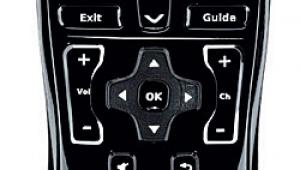Just think the power one person can have in their hand. Televisions, DVD Players and other devices could be controlled flawlessly and without much effort. No longer looking at small printed numbers (Sometimes looking like foreign print) wondering which code in a Universal Remote may turn off the TV but not control Menu Button. Put away the magnifying glass as the last remote you will ever need is here.. Wait is this a dream...Was I dreaming or is it really here..We must wait to find out...
Logitech Harmony One Universal Remote

One solution is a universal remote, such as the new Harmony One from Logitech. As a member of the Harmony family of universal remotes, the One offers some unique features and capabilities far beyond most others. Even better, it has improved on its predecessors, which were already my favorite universal remotes. Logitech conducted extensive ergonomic tests to determine the best design, and they were wildly successful.
Features
A universal remote operates several components by issuing their infrared (IR) codes from a preprogrammed database; some can also "learn" the codes for devices not in their database. There are many such universal remotes available today, but most share a common problem—they're difficult to configure and use.
All Harmony remotes solve these problems quite elegantly. First, they are designed around activities, such as watching TV, playing a DVD, and listening to a CD. The Harmony remotes treat the A/V system as a unified whole rather than a collection of components.
Another fundamental Harmony concept is online configuration. Software installed on your computer guides you through the setup process and communicates with the Harmony server. Obviously, the computer needs access to the Internet for this. Both Macintosh and Windows versions of the software are included on the supplied CD-ROM.
You specify the components in your A/V system, then define the activities you want to engage in and how each component needs to behave for each one. For example, is the volume controlled by the TV or receiver? Is the channel controlled by the TV or set-top box? Which TV and receiver inputs need to be selected for each activity?
In addition, you can easily customize the names of activities and the order in which they appear on the screen. You can also add and delete devices and activities as well as adjust the delay times to accommodate the quirks of various devices. Online support includes tutorials and helpful tips on every page, and phone support is available as well.
Once you've defined the system components, the way they should work together for each activity, and any other customizations, the server downloads the appropriate codes to the remote, which is connected to your computer via USB. In addition to configuration, the server also downloads software updates to the computer and firmware updates to the remote as they become available.
The server stores a database of all known products and IR codes. If a particular product's codes are not in the database, you can "teach" them by placing the product's remote near the Harmony remote and following the onscreen instructions. The new codes are uploaded to the database, tested, and made available for all subsequent users. To date, the database includes the IR codes for over 225,000 products from more than 5000 manufacturers.
One of the biggest problems for universal remotes is power synchronization. Some devices have discrete power on and off commands, while others have a single command that toggles the power on and off. Sometimes, a device's own remote toggles the power, but the device can actually respond to discrete power on/off commands. Input selection poses a similar problem—are the inputs on the TV and receiver available by discrete codes, or can you only cycle through them?
In most universal remotes, you must manually program strings of commands called "macros" to power multiple components on and off and set their inputs, but this is often fraught with frustration. For example, if a device with a single toggling power command is already on and you initiate a Power On macro, the device turns off, causing much gnashing of teeth.
The Harmony remotes provide a clever solution to this problem, dubbed Smart State Technology (SST). If a device turns off when it should be on or it fails to turn on—say, because the IR beam was temporarily interrupted—all you have to do is hit the Help button, and the remote guides you through a simple process of synchronizing the power status of each device. It knows which devices should be on and asks you if each one is; if not, it sends the command to turn it on. This process also helps correct the input settings if necessary.
Even better, when you press the Help button, the remote first issues the command that is most likely to be missing—say, the Power On command for the AVR—then asks you if this fixed the problem. If so, you're golden; if not, it starts asking you if each relevant component is on and set to the correct input. When you answer "no," it sends the appropriate command.
- Log in or register to post comments































































